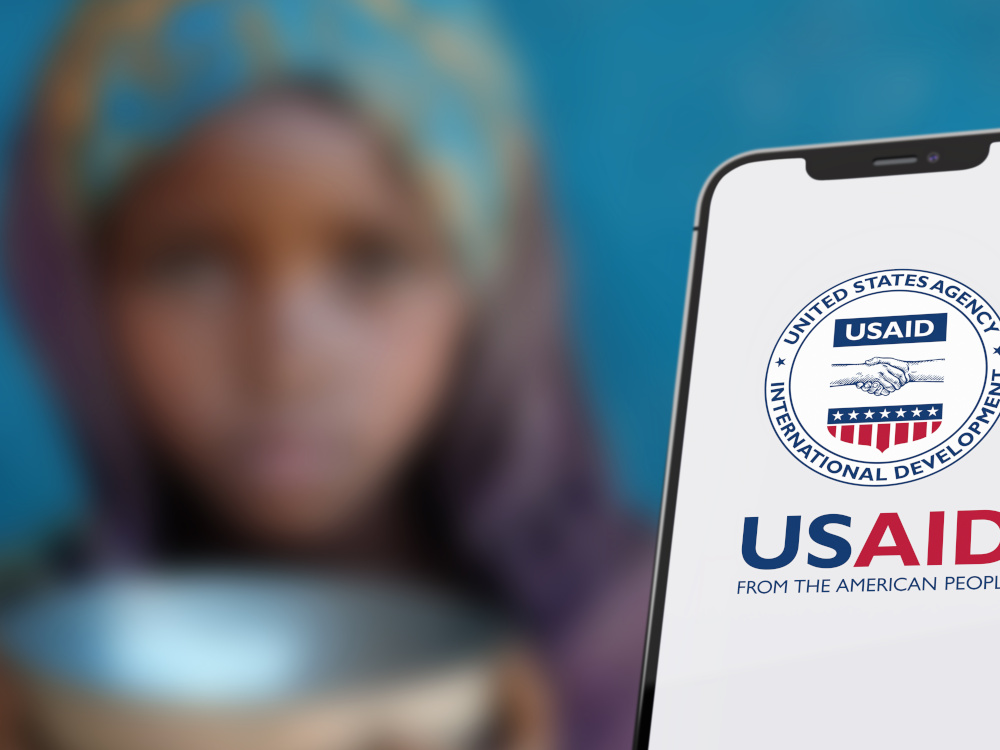The recent announcement by the U.S. government that it was shutting down its 64-year-old humanitarian aid and development agency known as USAID has sent destabilizing shock waves around the world. The program has provided money for food in countries where people are starving and healthcare where there is little to go around, not to mention funding education and promoting economic growth.
With an annual budget of more than US$60 billion, USAID (the U.S. Agency for International Development) “historically has been close to 50 per cent of all funding internationally for development and humanitarian aid,” says Malcolm Burrows, founder of the Aqueduct Foundation and head of philanthropic advisory services for Scotia Wealth Management in Toronto.
It’s part of a broader picture that’s seeing a profound re-examination of assumptions and systems that have been in place since the end of the Second World War.
What part should Canadian philanthropists and foundations be playing in this shake-up? Experts in the field speak of the fallout in the strongest terms.
“We hear about projects just being stopped in their tracks,” says Burrows. “These announcements have huge implications.”
He cites Oxfam numbers that predict 23 million children will lose access to education and 95 million people will lose basic healthcare, opening the door to “measles, typhoid, cholera—things that we don’t deal with in Canada. And heaven hope we don’t have something like Ebola again.”
Among the agency’s achievements are a 50 per cent reduction in child mortality since 1990, a 40 per cent reduction in maternal deaths between 2020 and 2023, and the saving of more than 25 million people with AIDS since 2003, according to Oxfam, which is part of a coalition of humanitarian groups that have launched legal action in defence of USAID.
“In terms of the impact on the ground to health, to well-being, to all of the effects of working internationally in disaster zones, in conflict zones, in areas that are most in need of aid, there’s good evidence that the implications will be frankly horrific,” says Susan Phillips, a professor of philanthropy and nonprofit leadership in the School of Public Policy and Administration at Ottawa’s Carleton University.
In addition to the USAID cuts, other large European donors such as the UK and Germany are also trimming funding, says Jean-Marc Mangin, president and CEO of Philanthropic Foundations Canada (PFC) in Montreal. “The system that was slowly developed since World War Two and the Marshall Plan is collapsing. You cannot exaggerate the impact on refugees, the health system, and there’s no way that philanthropy can make up the fact.”
Phillips says that even if all the Canadian and U.S. foundations and philanthropists were to pool their resources, they would not be able to fill the void left by the defunding of USAID. “We’re looking at a fundamental reconfiguring of that system. It will force us to rethink some of the potential routes in, because the impact is so devastating,” Phillips adds.
In fact, Canada has also been reducing its humanitarian aid spending, according to a May 2025 statement from the international development and humanitarian action group Cooperation Canada. The $803 million given in 2023-2024 represented a drop from $1.265 billion in 2022-2023, and is the lowest figure since 2015-2016.
What would it take to close the gap left by USAID’s defunding?
We hear about projects just being stopped in their tracks. These announcements have huge implications.
Malcolm Burrows, Scotia Wealth Management
Last May, Bill Gates announced that his foundation would double its annual donations in anticipation of the fund ending. He plans to give out about $200 billion over the next 20 years (the foundation closes at the end of 2045), but even this amount will not come close to filling the gap.
With numerous programs and organizations weakened or shuttered, one of the first necessary actions, says Burrows, is to take stock of those institutions that are least affected and have the most capacity to endure. It may not be effective to donate to those that might not recover.
For instance, one of the largest international aid organizations, Doctors Without Borders, intentionally takes only 0.5 per cent of its funding from government, in order to be able to operate with political impartiality. “About 10 or so years ago, they rejected all European Union funding during the migrant crisis,” says Burrows.
“It’s really important to look under the hood of organizations, look at their funding and try to understand whether their core infrastructure will be impacted,” he adds. “All sorts of organizations are going to be responding in different ways, but some may frankly go out of business.”
Philanthropic Foundations Canada, as part of the global philanthropic network WINGS, has launched an initiative to explore the process of transforming international philanthropy.
“The whole system of northern-based organizations supporting local partners is breaking down, so how do we create a system to support the most needy in the most creative fashion?” asks Mangin, who says he has some hope of potential solutions emerging from the upcoming G7 summit in Alberta.
The old system was far from perfect, he says. “To address problems at the local level has always been the best idea, and now it’s the most prevalent solution going forward. Canada can play a role and make a real difference, and I think philanthropy could play a novel but important role in the new world that we’re facing.”
Burrows notes that in the last 15 or 20 years “there’s been some significant criticism of aid. In some ways—and I don’t advocate for the cuts—it’s going to become an interesting reset. There have been historical and colonial assumptions about much of Africa, that it’s an echoing land of need, but that’s not the case. There’s a lot of capacity there. African societies have never been more able to step in.”
He cites disruptive models, including that of MEDA (the Mennonite Economic Development Associates), which is creating business capacity in the fight against poverty, and China’s ambitious Belt and Road initiative, which is investing in transportation, energy and agriculture—“an amazingly complex set of initiatives,” Burrows says.
Ultimately, USAID cuts may trigger a dramatic transformation in the global philanthropy landscape, but “let’s be perfectly clear,” he adds. “People are going to die.”
Get our new quarterly newsletter about philanthropy: Canadian Family Offices’ new newsletter brings you key insights, trends and expert perspectives on charitable giving, tailored to Canada’s wealth leaders and giving communities. Click here to subscribe now to stay ahead.
The Canadian Family Offices newsletter comes out on Sundays and Wednesdays. If you are interested in stories about Canadian enterprising families, family offices and the professionals who work with them, but like your content aggregated, you can sign up for our free newsletter here.
Please visit here to see information about our standards of journalistic excellence.




